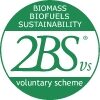The European Renewable Energy Directive (RED) requires that all players in the biofuels supply chain seeking to value their sustainable products in the market be certified.
At 2BS, we offer a certification that aligns with the directive and is easier to implement. However, we know that implementing a new certification is never simple.
So find here the five main things you need to know about the 2BSvs- biofuels certification.
Or, to learn everything you need to know about the 2BSvs – biofuels certification, check out our dedicated white paper!
1- What is RED?
The Renewable Energy Directive (RED) aims to promote energy produced from renewable sources and thus facilitate the reduction of greenhouse gas (GHG) emissions in European countries.
The RED also defines what is a sustainable and eligible raw material and a sustainable product.
In 2018, the RED II was published with revised targets for renewable energy use. And, in 2023, we see the arrival of the RED III directive, raising the goal of renewable energy usage rate from 32% to 42,5% by 2030.
2- What are the pillars of the 2BSvs – biofuels certification?
- Axis 1: Sustainability of Land And Raw Materials
Incoming raw materials must come from sustainable plots. They cannot come from land with high biodiversity potential or deforested land, for example.
Waste and residues must respect the principles of the circular economy and meet the definition of waste established in the Directive. - Axis 2: Greenhouse Gas Emission
With the aim of reducing greenhouse gas (GHG) emissions, the marketed product (biofuel or biogas) must be more virtuous than its fossil reference.
3- What is the certification scope?
The 2BS Association has developed the 2BSvs certification based on the RED Directive. This certification applies to all organizations in the production and distribution chain of biofuels and bioliquids worldwide that want to sell their products within the European Union.
The 2BS sustainability certification system covers:
- from biomass production and input collection to transformation into intermediate product, and/or
- the production of biofuels, bioliquids and fuels from biomass, and/or
- fuels produced by co-processing (refer to our procedure 2BS-PRO-06).
The 2BS certification is valid in all European countries. 2BS offers sustainability certification and works with certification bodies referenced and trained by our team to carry out accreditation audits.
4- What is mass balance?
It is important to understand two technical pillars of 2BSvs: mass balance and GHG calculation.
Regarding mass balance: a mass balance system allows batches of feedstocks or fuels with different sustainability and GHG emission savings characteristics, as well as varying energy contents, to be mixed by adjusting the batch sizes based on their energy content.
Mass balance requires information on sustainability characteristics, GHG emission savings, and batch sizes. The system expects that the sum of batches extracted from the mix will have the same sustainability characteristics and quantities as the sum of batches inputted, maintaining this balance over a certain period of time.
Thus, the mass balances for sourcing and processing must comply: the mass balance system must include information on sustainability, greenhouse gas emissions and the quantities of sustainable and non-sustainable raw materials.
5- How does the GHG calculation work within the 2BSvs-biofuels certification?
Greenhouse gas calculation is one of the two technical pillars of 2BSvs: mass balance and GHG calculation.
The calculation of greenhouse gas (GHG) emissions is mandatory for the RED II certification. The reduction in GHG emissions from biofuel compared to its fossil reference must reach the required threshold depending on its use and the date of commissioning of the unit, according to the RED II (see PRO-03, page 5).
There are three methods to calculate your GHG: the RED II default values, the NUTS2 values (values by region and by crop), or the actual values.
To simplify the calculation of your GHG emissions in actual values, we have developed an easy-to-use calculator, online on our website: click here to access our up-to-date documents.
This calculator allows you to identify your GHGs resulting from the extraction or cultivation of raw materials (eec) as well as your emission reductions due to the accumulation of carbon in soils thanks to improved agricultural management (esca) according to the new methodology. To learn more about ESCA, discover our ESCA guidelines.
Do you want to know more about the documents to be presented for the certification?

